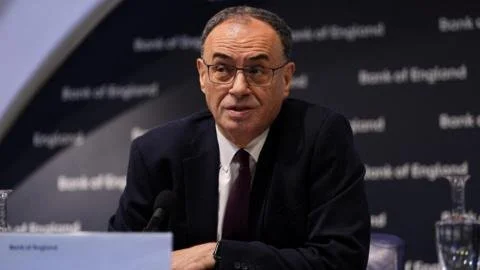Will the Bank of England's Governor Give Us a Holiday Gift or a Grinch Surprise on Interest Rates?
As the Bank of England navigates interest rate decisions amid uncertain economic conditions, the atmosphere remains charged, with city workers enjoying the mild weather outside while financial powerhouses deliberate significant changes internally. Recently, the interest rate was held steady at 4%, decided by a razor-thin margin, with indications that inflation might have reached its peak. Governor Andrew Bailey expressed caution, preferring to wait for further developments to affirm these expectations before considering any rate reductions.
The recent measures from last year’s Budget, including increases in National Insurance Contributions and minimum wage, have inadvertently added pressure to prices, complicating the landscape for consumers and businesses. Despite claims from the chancellor asserting his role in creating favorable conditions for potential rate cuts, the report highlights that previous Budget decisions have indeed exacerbated cost pressures and hiring hesitancies among employers.
As the upcoming Budget is anticipated, the focus will pivot toward potential tax rises and direct support for energy bills, which could ease price pressures but also pull money from consumers’ pockets. The Bank of England has already noted signs of economic hesitation among consumers and businesses, predicting a slower growth rate of just 1.2% in 2026, down from 1.5% for the current year, which poses issues for fiscal management.
The risk parameters noticed by the Bank indicate a cautious path ahead, weighing labor costs, upcoming inflation data, and various economic factors. This is a critical moment for Governor Bailey, who holds a pivotal position in deciding whether to adopt measures that could either promote economic relief or tighten financial burdens. With projections hinting at gradual interest rate reductions, there remains a specter of persistent inflation pressures, particularly influenced by food prices that have historically spiked, conditioning public expectations on future inflation.
As many homeowners brace for continuing high mortgage costs despite the recent stabilization of rates, the notion of receiving financial relief appears to be a gradual process rather than an instantaneous solution. The economic landscape, molded by recent actions and forecasted indicators, begs the question - will the Governor act as Santa or Scrooge come mid-December?

